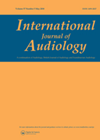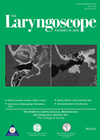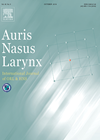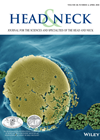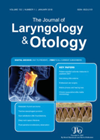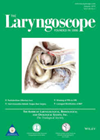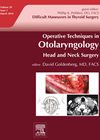
Journal Reviews
Grading dysphagia as a toxicity in treating head and neck cancer
Common Terminology Criteria for Adverse Events (CTCAE) is a system used by clinicians to grade the toxicity of oncology treatments in a standardised manner. Dysphagia is perhaps the most common long-term toxicity of head and neck cancer treatment. Currently, a...
Tinnitus association with psychiatric and personality disorders
Tinnitus attracts large interest among researchers all over the world due to its negative psychological side-effects. This study aimed at investigating lifetime and current prevalence of psychiatric and personality disorders in patients with long-lasting and distressing tinnitus. Participants included 49...
CBT for tinnitus and hyperacusis
Finding an efficient treatment for tinnitus attracts the interest of researchers worldwide. Cognitive behavioural therapy (CBT) is one of the widely researched methods used in tinnitus management. The aim of this study was to investigate what proportion of patients complete...
Postoperative radiation in early stage oropharyngeal squamous cell cancer (OPSCC)
There is significant variation in treatment strategies for OPSCC between units. This is largely due to unanswered questions which continue to exist beyond the published literature. We know that human papilloma virus status has a significant influence on prognosis but...
Does CPAP help diabetes?
This meta-analysis and review of the literature examines the long-held belief that CPAP treatment improves glucose levels in patients with OSA. As usual in these cases, thousands of articles were initially flagged up in the search with only six RCTs...
What to do with incidental findings on FDG PET/CT?
18F-fluoro-deoxy-glucose positron emission tomography/computed tomography (FDG PET/CT) is commonly used in head and neck cancer staging. This investigation frequently identifies incidental findings unrelated to the index head and neck cancer. To assess the nature of these incidental findings, notes of...
Inspiratory peak flow and tracheostomy
The evaluation of the degree of laryngeal obstruction to indicate a tracheostomy has always been a subjective decision. The authors correlated the visual laryngeal obstruction by flexible nasolaryngoscopy and the peak inspiratory flow using a pocket peak inspiratory flowmeter. Twenty-two...
Should all patients with BPPV have an MRI?
This paper describes an interesting series of 500 patients over a 10-year period with posterior canal BPPV, who had been investigated with MRI. The female to male ratio was 1.6:1 with a mean age of 56. There was a right...
The rise of AI in the head and neck clinic
There has been a huge focus in recent months on the rise of artificial intelligence (AI) in all aspects of modern life, and the head and neck clinic is no exception it appears. This paper builds on previous work to...
Diagnostic performance of non-echo-planar diffusion weighted MRI in detection of suspected cholesteatoma
Even though a ‘second look’ remains a gold standard for detection of residual cholesteatoma after intact canal wall techniques, non-echo-planar diffusion weighted MRI is considered a reasonable alternative to avoid further surgery. However, to establish or exclude a cholesteatoma de...
Which da Vinci surgical system? Novel flexible, single-port versus current multiport, rigid-arm robotic surgical system
The da Vinci robotic surgical system has transformed how oropharyngeal head and neck surgery can be delivered. The existing da Vinci Si model has challenges: the dimensions of this are larger than would be ideal for head and neck surgery...
Suspect the unsuspecting in thyroid cancer
This article reminds readers of how often invasive thyroid disease can appear, as the symptomatology is minimal. Noticeable airway symptoms appear after 50% of the airway is involved and surgeons can often fall in the unsuspecting trap of discovering locally...


